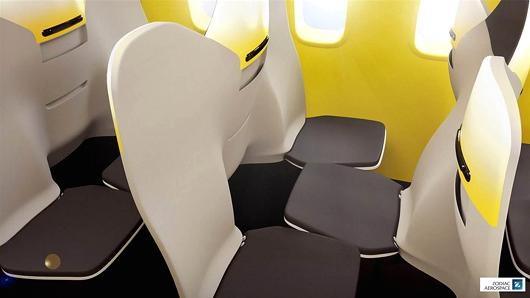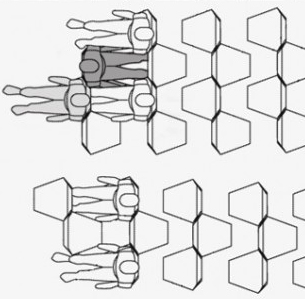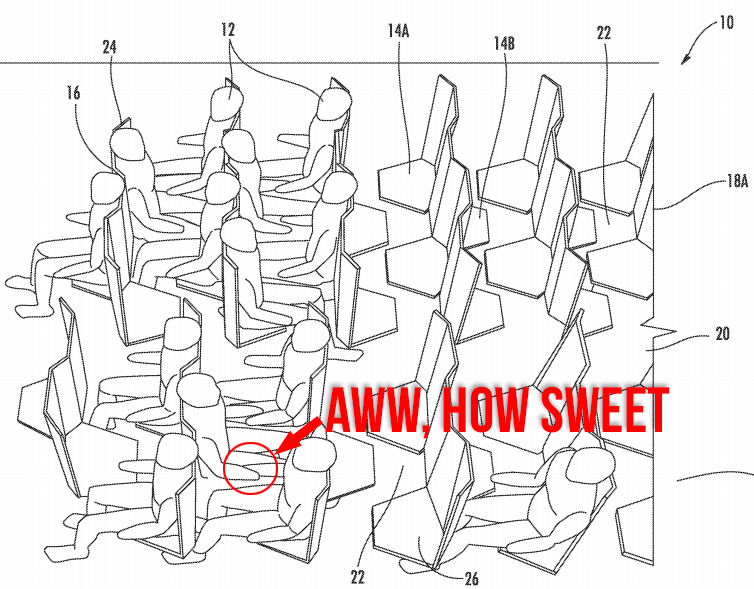Bad Behavioral Engineering
I am a Francophile. I have great respect for French values, history, cuisine, and culture. But I do not like all things that come out of France. One such thing is the recent whacky idea of placing the middle seat of the familiar airplane 3-row seating arrangement facing in the opposite direction from the window and aisle seats. The claim is that in so doing it is possible to squeeze a few more seats in the economy, or steerage, section of passenger airplanes.


We all have learned empathy for sardines based on our travels on contemporary airlines. Now the French designers are trying to add insult to injury by making us not only even more squeezed in, but, worse yet, having to stare at and be stared at for hours at a time by our neighbors as we whiz across the sky. It is yet another example of someone coming up with an idea that completely ignores the “human element” in design. Many people who design spaces in which humans live and work are remarkably either obtuse or insensitive with respect to those of us who will use these spaces.
 At the university where I work there was a seemingly sacred area called Woodburn Circle, where the oldest buildings on campus were located. A more or less circular sidewalk surrounded an open green space onto which each of the three buildings on the circle faced. The green space was carefully managed and people generally stayed off of it. That was until a new large building was constructed behind the circle, accessible through a set of stairs (ours is a very hilly campus) that were connected to the circular sidewalk. To access the stair one had to walk circuitously around the sidewalk defining the perimeter of the green space OR walk in a beeline across the greenspace. Bingo! The powers that be replanted the cow paths worn across that green space what seemed like hundreds of times (more realistically “several”) before finally putting up a truly hideous plastic fence barrier (one that looked like the back of a large orange snake). Yep, people just walked over the fence and the cow paths were back! This all transpired over a period of a few years before some sane person in charge persuaded the university to relent and allow the behavior of the space’s users to dictate its design. We now have attractive sidewalks bisecting the space and covering the cow paths that designated the course of human behavior (walking, in this case) in that environment.
At the university where I work there was a seemingly sacred area called Woodburn Circle, where the oldest buildings on campus were located. A more or less circular sidewalk surrounded an open green space onto which each of the three buildings on the circle faced. The green space was carefully managed and people generally stayed off of it. That was until a new large building was constructed behind the circle, accessible through a set of stairs (ours is a very hilly campus) that were connected to the circular sidewalk. To access the stair one had to walk circuitously around the sidewalk defining the perimeter of the green space OR walk in a beeline across the greenspace. Bingo! The powers that be replanted the cow paths worn across that green space what seemed like hundreds of times (more realistically “several”) before finally putting up a truly hideous plastic fence barrier (one that looked like the back of a large orange snake). Yep, people just walked over the fence and the cow paths were back! This all transpired over a period of a few years before some sane person in charge persuaded the university to relent and allow the behavior of the space’s users to dictate its design. We now have attractive sidewalks bisecting the space and covering the cow paths that designated the course of human behavior (walking, in this case) in that environment.
 Behavior analysts think of themselves as environmental engineers, experts in arranging environments to optimize human behavior. And we do a good job of it, too. It is unfortunate for many reasons that there are so few of us in France, for the technicians who concocted this cockamamie idea for squeezing more people into the painfully finite space of an airplane while at the same time forcing strangers to stare at one another could have used some guidance about the effect of their designs on the people who will be forced to use them. As it is, I fear that passengers on any such redesigned airplanes may be wishing that the guillotine be dusted off.
Behavior analysts think of themselves as environmental engineers, experts in arranging environments to optimize human behavior. And we do a good job of it, too. It is unfortunate for many reasons that there are so few of us in France, for the technicians who concocted this cockamamie idea for squeezing more people into the painfully finite space of an airplane while at the same time forcing strangers to stare at one another could have used some guidance about the effect of their designs on the people who will be forced to use them. As it is, I fear that passengers on any such redesigned airplanes may be wishing that the guillotine be dusted off.



